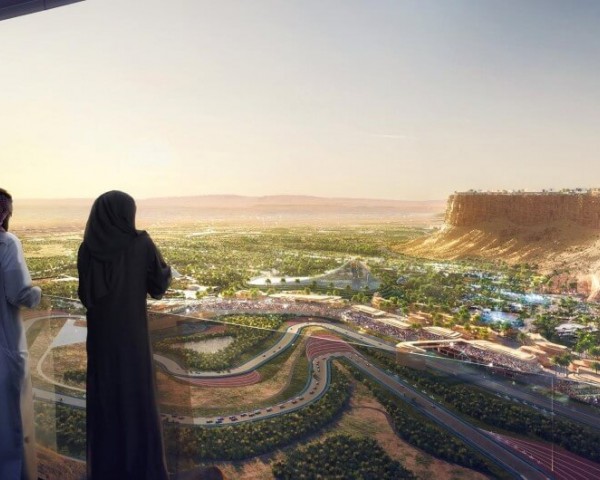Saudi Arabia has made significant efforts to advance the global tourism sector. The country’s tourism sector has been growing in line with Saudi Vision 2030, which has led to improvements in infrastructure, the implementation of sustainable projects in line with the Saudi Green Initiative, and the preservation of nature, the environment, and local communities. The authorities will now invest in various luxury projects as well.
The tourism sector in Saudi Arabia is undergoing a remarkable transformational journey in alignment with Vision 2030, with the country’s $3.2 trillion luxury tourism engine driving the expansion plans of high-end travel providers.
Fundamental Reforms
The landscape of the Saudi tourism sector has changed since the launch of the National Tourism Strategy in 2019. The Kingdom has seen increased investments and a surge in tourists. In the first quarter of 2024, visitors to the Kingdom spent over 45 billion riyals, marking a 22.9% increase compared to the same period in 2023. The travel surplus reached 24 billion riyals, reflecting a growth rate of over 46% from 2023. In 2023, Saudi Arabia ranked first in the United Nations Tourism List for the growth rate of international tourists and tourism revenues among major tourist destinations worldwide compared to 2019.
NEOM and Qiddiya Luxury Projects
The $500 billion NEOM project is one of the most important mega projects that will shape the tourism market in the Kingdom over the next ten years. Once completed, it will be a huge and sustainable future city. The project is set to launch on the Red Sea in 2025 and is the largest and most ambitious smart city in the Kingdom and the world. With the support of Saudi Arabia’s Public Investment Fund and international investors, the fully digital future city is expected to contribute $100 billion to Saudi Arabia’s GDP by 2030.
The Qiddiya project in Riyadh is a $10 billion development spanning 334 square kilometers. Over 45 projects, including more than 300 recreational and educational facilities, are planned in its first phase. These will feature a standard Formula 1 racetrack, a 20,000-seat cliff-top stadium, an 18,000-seat indoor arena, a children’s playground, an aquatic center, a sports center, a theatre for performing arts, and a 2,000-seat cinema.
The project is located in the northern region, which has an area of 3,800 square kilometers, in addition to AMAALA (Saudi Riviera). It was launched in September 2018 and is on track to completion in 2028. It features 2,525 hotel keys and 1,496 residential units and will target ultra-high-net-worth individuals.
The first phase of the Red Sea luxury project development will feature 14 luxury hotels with 3,000 rooms across five islands. Additionally, it will include recreational facilities, an airport, logistical infrastructure, and other necessary supporting amenities. Upon completion in 2030, the destination plans to offer up to 8,000 hotel rooms over 22 islands. Moreover, the authority will invest over $1.3 billion to develop museums across Saudi Arabia. Saudi Arabia has ambitious plans for various attractions in the coming years, all of which will contribute to the rapidly growing leisure and entertainment sector. Vision 2030 is set to revolutionize the economic and tourism landscape in Saudi Arabia and the entire Middle East region, significantly impacting the leisure tourism industry.
Recreational Attractions
The Kingdom is undergoing a massive construction boom, developing private islands, luxury hotels, parks, cruise ports, and even a desert ski resort. Saudi Arabia is about to undergo a significant transformation as a travel destination. For example, the Sindalah Resort on a seven-star private island features three luxury resorts, 38 fine dining restaurants, and multiple marinas for superyachts.
Another example is Qiddiya, a futuristic city of 600,000 emerging from the desert, dedicated to sports and gaming. Trojina, a space-age ski resort built over the high desert, and the Red Sea, a vast waterline with 50 luxury resorts with 8,000 hotel rooms across 22 islands in a Maldives-style archipelago, powered entirely by wind and solar energy.
The Reg Park
Work is underway on The Reg, a five-billion-dollar theme park built on an offshore oil platform. The Public Investment Fund (PIF) announced the park’s launch in 2021, and it aims to become an attractive destination for those seeking challenge and adventure. The park will feature three hotels, international restaurants, helipads, and various adventures, including daring sports, bungee jumping, and high-speed attractions. The project also includes innovative ideas to inject new luxury projects into the Saudi tourism and entertainment sector.
Additionally, Saudi Arabia is positioning itself as a prime cruise destination, with a Saudi cruise company recently purchasing a $300 million vessel. New routes, airports, golf courses, and cruise terminals are being developed across the Kingdom, leading to a significant transformation in the tourism and entertainment sector.
In 2024, the Kingdom’s tourism sector will welcome 88 million visitors. This growth in the number of visitors will lead to improvements in airport and road capacity and technical and government services and will also help promote and enrich Saudi culture. The sector is expected to generate 289 billion riyals in tourism spending, which will directly contribute to the local economy, boost non-oil resources, and support the private sector by creating increased demand in the tourism industry.
Foreign Tourists Spending
According to preliminary data from the Saudi Central Bank, in 2023, Saudi Arabia set a new record for spending by visitors from abroad, reaching 135 billion riyals. This represents the highest spending in the Kingdom’s history, with a growth rate of 42.8% compared to 2022. Additionally, the Kingdom received international praise from the World Tourism Organization and the World Travel and Tourism Council for welcoming over 100 million tourists from both domestic and international sources in 2023.












